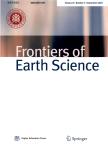Distribution of snow depth variability
雪深度可变性的分发作者机构:ESS-Watershed ScienceColorado State UniversityFort CollinsCO 80523-1476USA Cooperative Institute for Research in the AtmosphereFort CollinsCO 80523-1375USA Natural Resources Ecology LaboratoryFort CollinsCO 80523-1499USA Geographisches InstitutGeorg-August-Universitat Gottingen37077GottingenDeutschland GeosciencesColorado State UniversityFort CollinsCO 80523-1482USA Instituto Pirenaico de EcologiaCSICCampus de Aula Dei50080ZaragozaEspana State Key Laboratory of Flydroscience and EngineeringTsinghua UniversityBeijing 100084China Seconda Universita degli Studi di NapoliViale Abramo Lincoln581100Caserta CEItalia
出 版 物:《Frontiers of Earth Science》 (地球科学前沿(英文版))
年 卷 期:2018年第12卷第4期
页 面:683-692页
核心收录:
学科分类:07[理学]
基 金:provided by a grant from the Colorado Water Conservancy Board award POGG1 PDAA NOAA award (PI N.P. Molotch) NASATerrestrial Hydrology Program award (PI M.F. Jasinski)
主 题:uncertainty sampling binary regression trees snow telemetry
摘 要:Snow depth is the easiest snowpack property to measure in the field and is used to estimate the distribution of snow for quantifying snow storage. Often the mean of three snow depth measurements is used to represent snow depth at a location. This location is used as a proxy for an area, typically a digital elevation model (DEM) or remotely sensed pixel. Here, 11, 17, or 21 snow depth measurements were used to represent the mean snow depth of a 30-m DEM pixel. Using the center snow depth measurement for each sampling set was not adequate to represent the pixel mean, and while the use of three snow depth measurements improved the estimate of mean, there is still large error for some pixels. These measurements were then used to determine the variability of snow depth across a pixel. Estimating variability from few points rather than all in a measurement was not sufficient. The sampling size was increased from one to the total per pixel (11, 17, or 21) to determine how many point samples were necessary to approximate the mean snow depth per pixel within five percent. Binary regression trees were constructed to determine which terrain and canopy variables dictated the spatial distribution of the snow depth, the standard deviation of snow depth, and the sample size to within 5% of the mean per pixel. One location was measured in two years just prior to peak accumulation, and it is shown that there was little to no inter-annual consistency in the mean or standard deviation.




